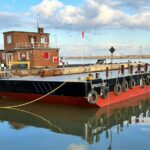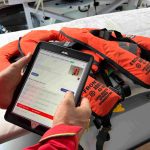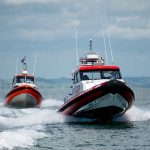Some people only conduct vessel maintenance when they notice that their vessel is not operating normally, but only caring for your vessel/s when you see an issue is a false economy. If you wait too long to take care of your vessel/s, you and your crew may experience unscheduled downtime and problems out on the water. Instead, preventive maintenance is the way to keep your crew, your fleet and your equipment safe.
Planned maintenance is critical, even if your vessel/s appear to be working fine. Keep reading to learn why this is, when the risk is higher and how you can do your best to keep your fleet safe.
Why Maintenance Is So Crucial
Routine vessel maintenance can prevent many problems. Sometimes, it’s difficult to know anything’s wrong until something breaks down. By regularly maintaining and checking on your vessel’s systems and equipment, you can identify potential issues and resolve them before they become more dangerous and more expensive to fix.
Maintenance is important for both safety and monetary reasons. A damaged vessel can be dangerous to everyone on and around it, and equipment can be very expensive to fix or replace.
Situations Where Potential Risk Is Higher
Accidents can occur when you least expect them. And, in certain situations, your equipment breaking down due to neglected vessel maintenance can lead to seriously costly environmental and reputation damage. You should know that there are certain situations where your vessel breaking down is seriously dangerous.
For example, the consequences of equipment failures are even worse when you are:
- On a lengthy voyage.
- In deep water where you cannot anchor your boat.
- Experiencing poor weather or weather that can change.
- Operating in areas where receiving help or extra parts is difficult.
Failure to maintain your vessel/s and heading into any of the above situations, or any other conditions that could be dangerous, is a poor decision. However, your vessel/s breaking down in any other circumstances, even if you’re close to port, can also be hazardous.
Preventative vessel maintenance is one of the best ways to keep your vessel and crew safe on the water to prevent breakdowns and unfortunate situations occurring.
What You Should Do To Properly Maintain Your Vessel/s
Preventive maintenance is extremely important. So, how do you ensure that your vessel/s is maintained correctly?
Fortunately, keeping up with your maintenance schedule is easy when you use helpful software that assists you with fleet management. At Sea-Flux, we provide our clients with software that can make managing your crew and vessel/s easier. Using this software, you can ensure that your vessel/s are all up to date with their maintenance.
Our software can conveniently streamline your maintenance schedule, for both time and hourly based tasks. This simplifies your work list and provides a platform to make your vessel maintenance much more manageable.
When you are having your vessel/s maintained, you should consider the following to maximise safety and efficiency:
Check Your Vessel/s Equipment And Components. Never wait for a breakdown and time consuming problems to appear before you check on all of your vessel’s equipment and components. Vessel maintenance can include checking on your vessel’s various equipment, even if they appear to be working fine.
Regularly checking on your vessel/s equipment will help you identify if anything is wrong. Plus, you may spot signs of growing issues. In that case, you can have the problem resolved before it grows. Preventive maintenance is one of the smartest things you can do for your fleet.
Check All Safety Gear. If anything unfortunate does happen, your crew should have the necessary gear to deal with the problem. Check on safety gear including life jackets, rafts, and first aid kits. Life jackets and rafts need to be checked regularly for damage that could hinder their usefulness, and check the expiration dates on the items in your first aid kits.
Check Manufacturers’ Recommendations. Most engines and equipment have set recommendations for care and upkeep. These recommendations can tell you what you should do to keep those specific pieces of equipment working well. Knowing what’s recommended will help you understand what to do.
Check Legal Requirements. You may be legally required to maintain your vessel/s or keep a safety management system in a certain way. Always ensure that you follow the law and properly care for your vessels to stay safe and legally sound.
How You Can Make Routine Preventative Vessel Maintenance Easier And More Efficient For Your Fleet
Speak to us at Sea-Flux to learn the best ways to maintain and supervise your Australian fleet. We have several software plans available and encourage you to read through our offers to see which fits your company’s needs best.
Or, if you would like to test our software before you fully commit, we invite you to do that as well. You can request a demo so that you can try our user friendly software yourself.
Would you like to know more? Get in touch with our team through our contact page or mail at safety@seaflux.com.au.
Preventive maintenance is an essential part of fleet maintenance. Keep your crew safe with Sea-Flux.








